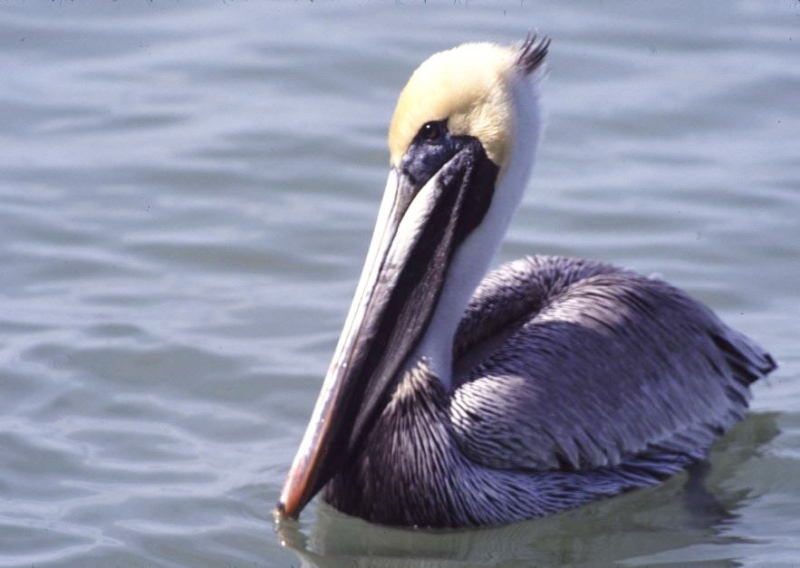Brown Pelican: Beak as big as his "bellycan"
By Dave Hanks
There they are - sitting like boats in the harbor, or perched on the harbor
pilings, or flying in a single-file group over the water. Even though they
are clumsy on land, they are very graceful in flight, and air sacs beneath
their skin make them extremely buoyant on water.
This smallest of the eight pelican species is about 4 feet long and weighs
about nine pounds. Brown Pelicans live strictly on the coastlines of the
Pacific and Atlantic Oceans of the western hemisphere. It is a carnivore that
lives mainly on fish – which are captured by diving head first into the water
(unlike other pelicans, which scoop up fish while swimming on the surface).
Their interesting anatomy centers on a huge, straight bill with an enormous
pouch. The pouch can hold three times as much as their stomach and is useful
in scooping up and storing prey (which their young feed from). The pouch is
also a body cooling device. Blood vessels close to its surface emit excess heat.
Brown Pelicans nest on islands off the coast of Mexico, where two or three
chalky-white eggs are laid in a platform-like nest made of sticks and grass.
Four or five months are spent on the breeding grounds - feeding the chicks
and teaching them that spectacular head-first dive for fish.
Pesticides washed into the water put them on the endangered species list.
Fish ingest the chemicals – pelicans ingest the fish – the chemicals intensify
as they move up the food chain. This bird is making a valiant comeback effort.
(At rest upon a South Padre Island, Texas bay)
|
